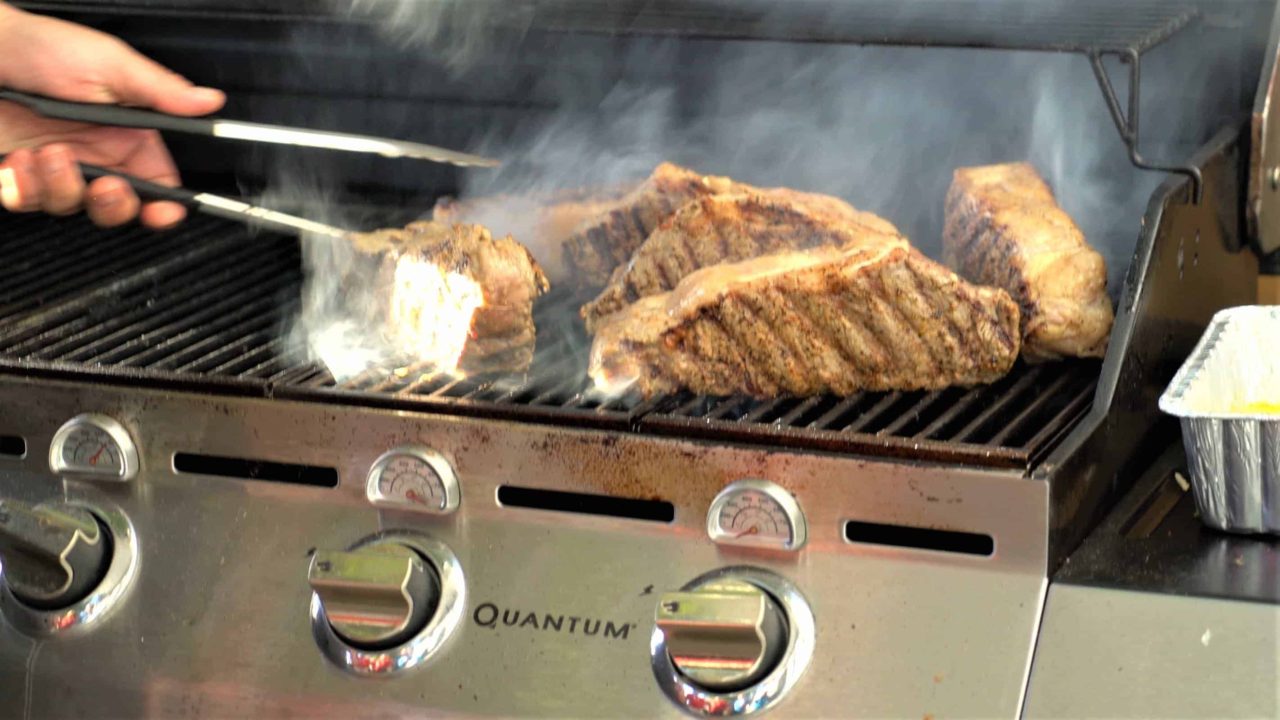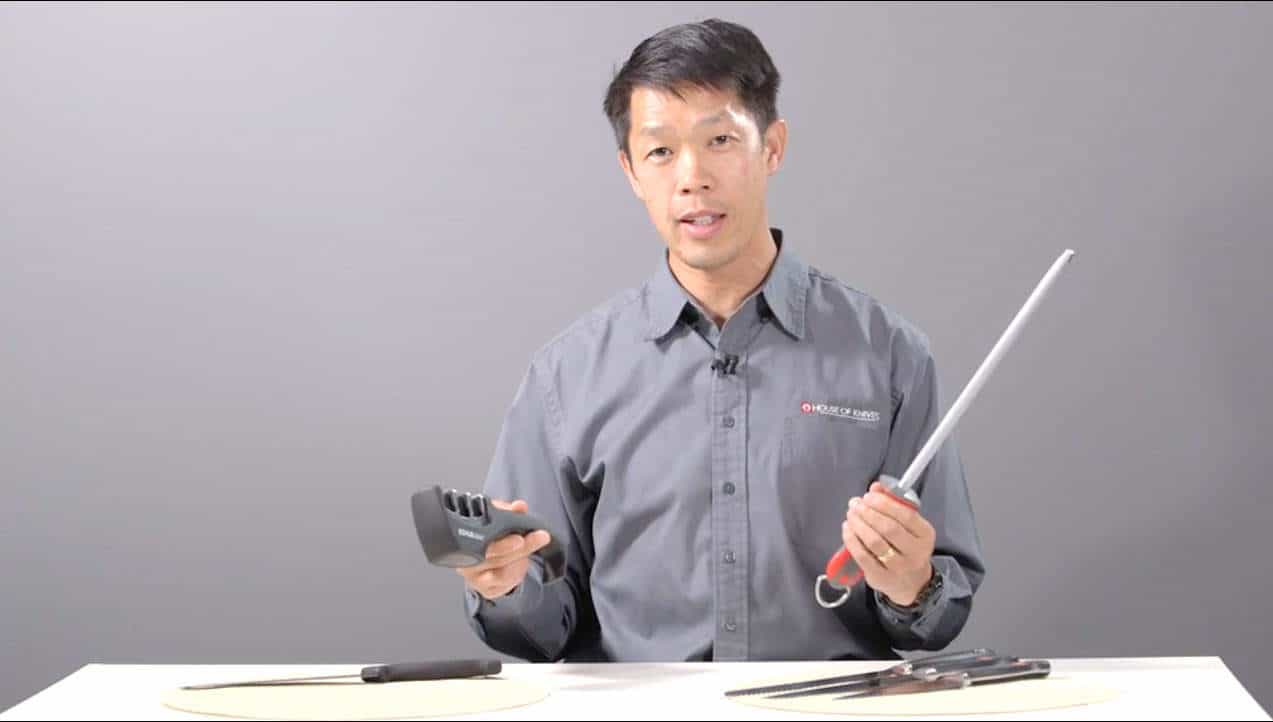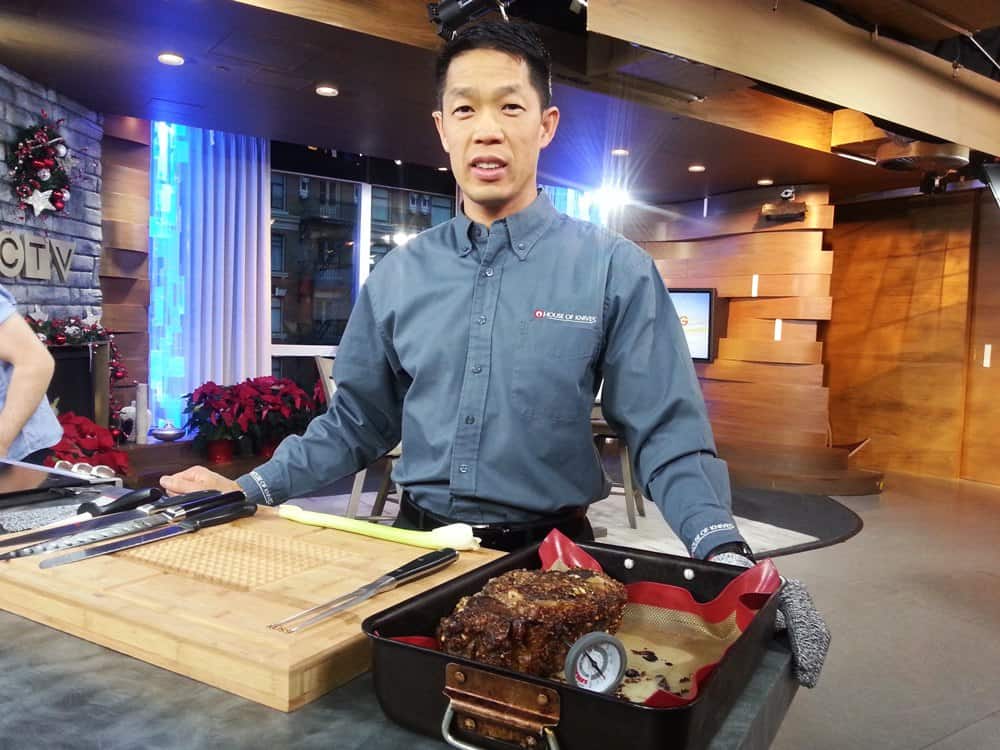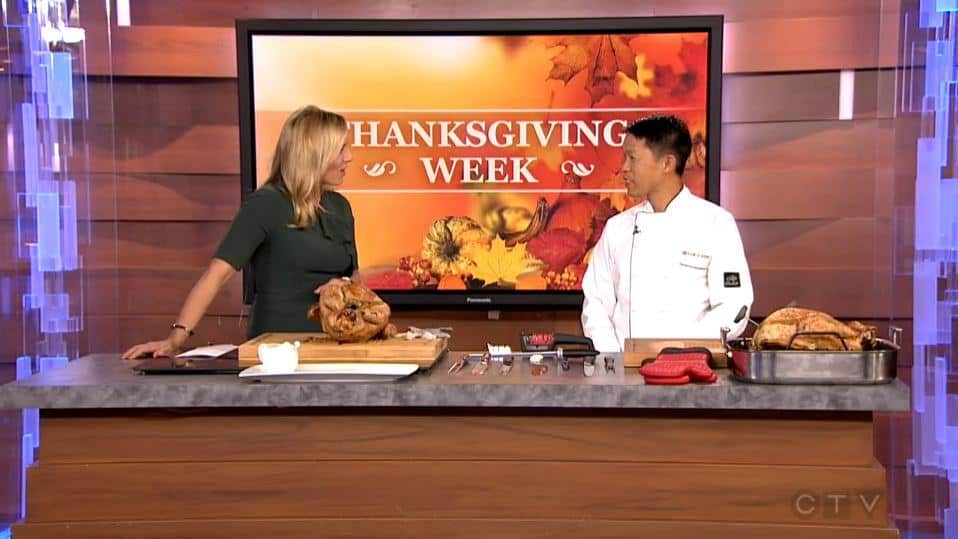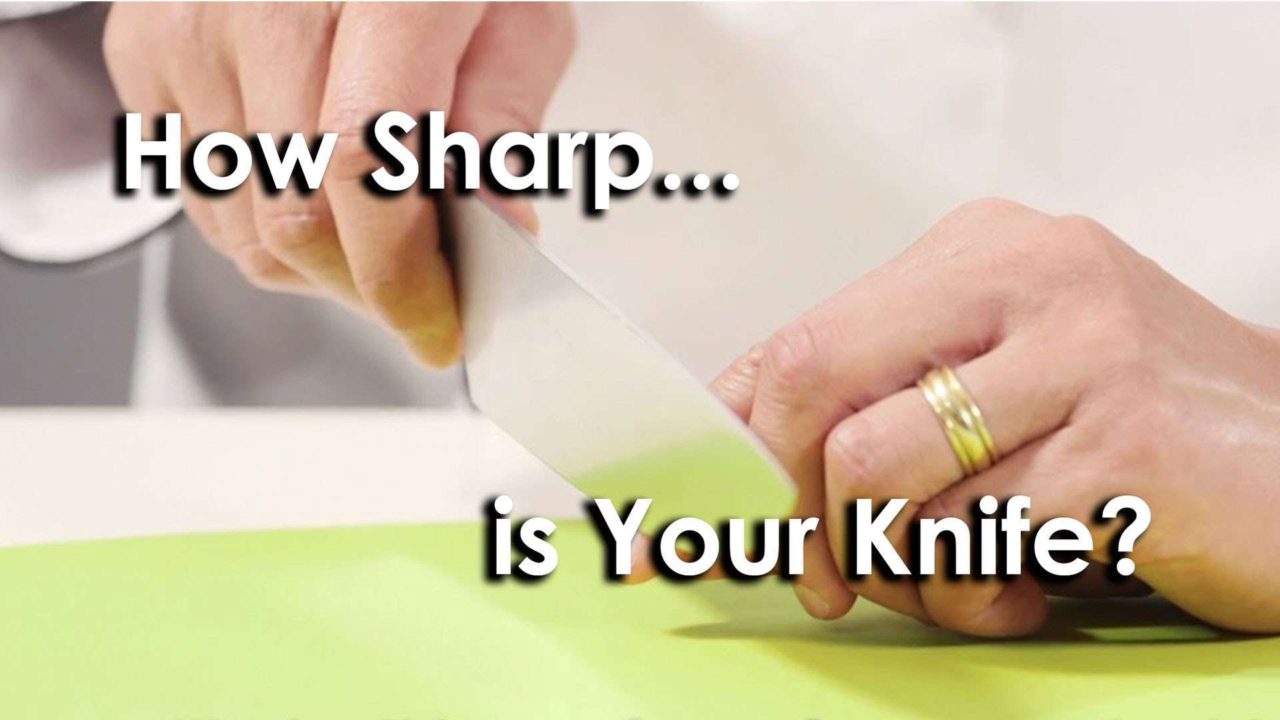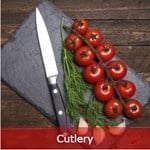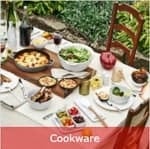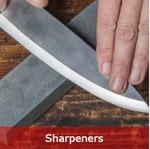6 Tips to Help You Prepare For Easter Dinner
 In my family, Easter is as big a deal as Thanksgiving and Christmas. It’s another great excuse to get everyone together, enjoy each other’s company, and sit down to a phenomenal meal made by Grandma. But not everyone has a grandmother to spoil you rotten with recipe’s passed down from generations ago. For some, Easter is more often than not accomplished with cookbooks, and a healthy dose of trial and error. So to make your Easter dinner a success, let us give you a few tips that will save you time and worry.
In my family, Easter is as big a deal as Thanksgiving and Christmas. It’s another great excuse to get everyone together, enjoy each other’s company, and sit down to a phenomenal meal made by Grandma. But not everyone has a grandmother to spoil you rotten with recipe’s passed down from generations ago. For some, Easter is more often than not accomplished with cookbooks, and a healthy dose of trial and error. So to make your Easter dinner a success, let us give you a few tips that will save you time and worry.
1. Proper Cookware is a Must
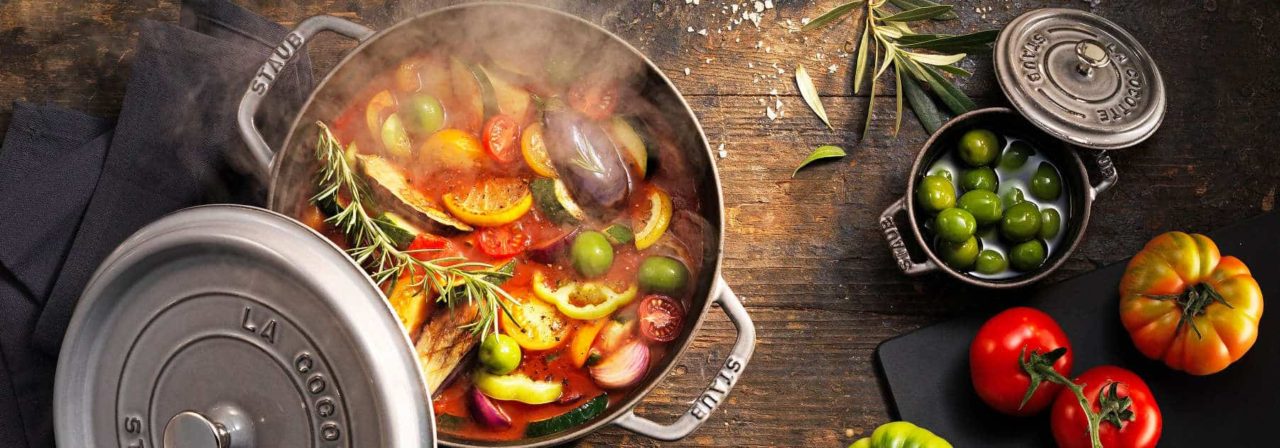 Having proper cookware is nearly as important as having good knives. You really don’t know what you’re missing until you have a chance to work with it in your kitchen. And once you have it, you’ll never go back to anything less.
Having proper cookware is nearly as important as having good knives. You really don’t know what you’re missing until you have a chance to work with it in your kitchen. And once you have it, you’ll never go back to anything less.
If you’re going the bird or roast route, a large pan with low sides and a rack is the way to go. The low sides ensure even browning, while the rack ensures your roast doesn’t stick you can easily move it around. For that, the Zwilling TruClad Roaster is your ticket to roasting perfection.
If you’re going to slow-cook, there’s nothing better than cast iron cookware. The Staub Cocotte is uniquely suited to cooking slowly, thanks to its spiked lid which continuously self-bastes your food for as long as you cook it.
* Looking for Staub Cookware? It’s available at all our stores except: Lougheed Mall, Capilano Mall, Pine Centre, and Sevenoaks Centre.
2. Take Your Food’s Temperature
 Probably the worst thing that can happen as a host is when you serve undercooked food to your guests, making everyone sick. Avoid that completely by using a thermometer and cooking your food to a safe temperature.
Probably the worst thing that can happen as a host is when you serve undercooked food to your guests, making everyone sick. Avoid that completely by using a thermometer and cooking your food to a safe temperature.
If you’re cooking meat, use a meat-specific thermometer like the Kuchewerks Meat Thermometer. Stick it in the thickest part of food to measure properly.
- For a whole bird (chicken, turkey): 82°C (or 180°F)
- For pork (ham, loin, ribs): 71°C (or 160°F)
- For tenderized beef, veal, or steak: 63°C (or 145°F)
For more information on proper cooking temperatures, make sure you check out Canada’s Safe Internal Temperature Chart for more detailed options.
3. Protect Your Hands from Heat
![]() With cloth oven mitts, you can only hold a scalding pan for so long. And watch out if your mitts are wet! Wet oven mitts have been known to cause a fair few kitchen-related burns. And no one wants to fling their just-made dinner across the kitchen because the pan burned them.
With cloth oven mitts, you can only hold a scalding pan for so long. And watch out if your mitts are wet! Wet oven mitts have been known to cause a fair few kitchen-related burns. And no one wants to fling their just-made dinner across the kitchen because the pan burned them.
With silicone oven mitts, you don’t have to worry about any of that. Not only is the Kussi Silicone Glove heat-resistant up to 250°C (480°F), it’s water-proof, and it’s extra long so your forearms are also shielded. The silicone provides an excellent grip on pans and other cookware, and the cotton lining ensures a comfy experience as you make the nervous trek to the dinner table with your creation.
4. Good Knives Go a Long Way
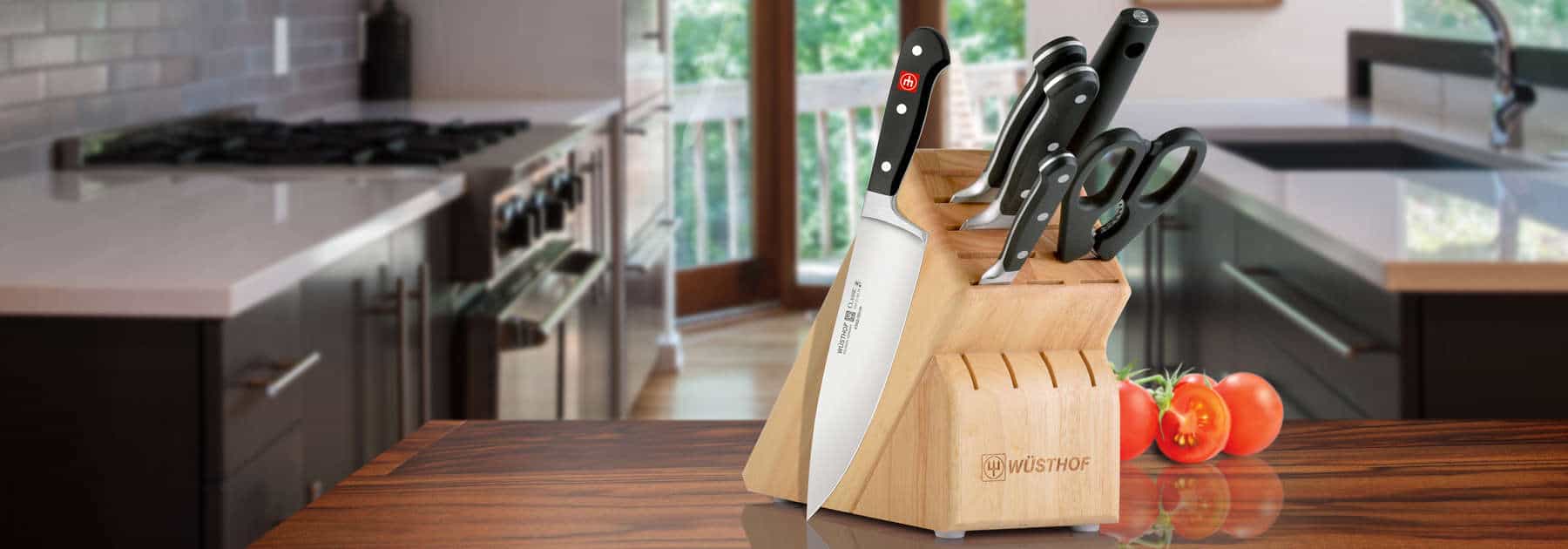 If you’re making a roast, proper carving cutlery will only make your life easier. Invest in a carving knife and fork that will serve for years to come, and be used in many applications.
If you’re making a roast, proper carving cutlery will only make your life easier. Invest in a carving knife and fork that will serve for years to come, and be used in many applications.
A German set like the WÜSTHOF Classic 2pc Carving Set will be durable and reliable for years and years. Combined with the straight fork, you’ll be able to cut slices and move them to your guest’s plates with ease. In a pinch, the WÜSTHOF Classic 8″ Chef Knife, shown above, will also do. It’s the most versatile knife in the kitchen for a reason. Just make sure it’s sharp and honed properly.
5. Keep Your Knives Sharp
 Dovetailing nicely from the last tip, remember, a sharp knife is a safe knife. So to avoid any accidents with a blade (and to decrease your frustration with blades that don’t cut!), make sure you keep your knives in razor-sharp condition. You can do this with a home sharpener, such as a Chef’s Choice electric sharpener, or a pull-through sharpener. If you’re not sure if your knife is sharp or not, just use this quick tip to figure it out in a snap.
Dovetailing nicely from the last tip, remember, a sharp knife is a safe knife. So to avoid any accidents with a blade (and to decrease your frustration with blades that don’t cut!), make sure you keep your knives in razor-sharp condition. You can do this with a home sharpener, such as a Chef’s Choice electric sharpener, or a pull-through sharpener. If you’re not sure if your knife is sharp or not, just use this quick tip to figure it out in a snap.
You can also take them into House of Knives, and we’ll sharpen them up for you. Our professional sharpening service is reasonable and quick. But if you have some time, doing it yourself on a set of sharpening stones is its own rewarding experience.
6. Cut-Proof Your Fingers
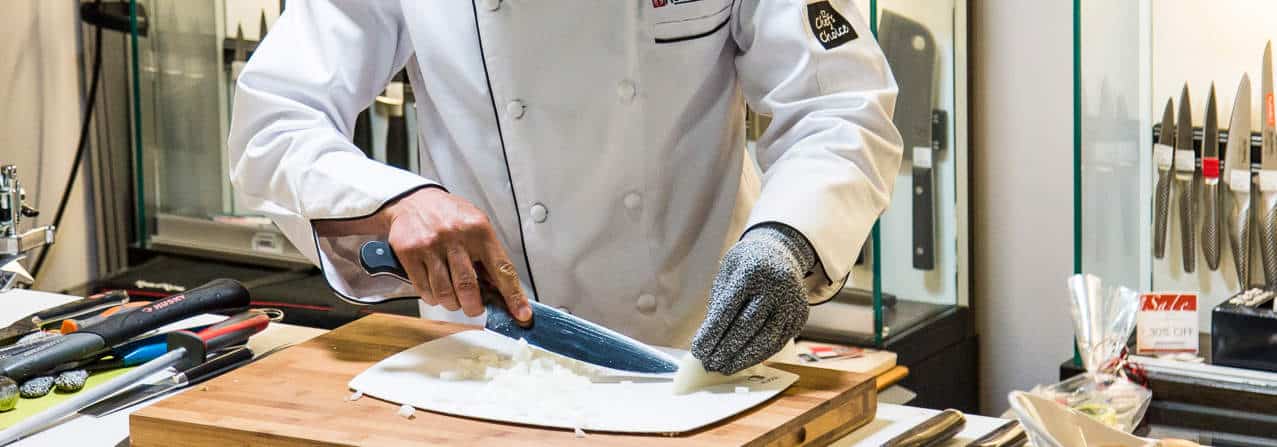
So what’s the second worst thing, after undercooking your food? Accidentally cutting yourself while you cook, and not realizing it until it’s too late.
To avoid any cuts and nicks to your hands, wear a cut-resistant glove. It’s better to be safe than sorry! Plus, when you are moving at faster than normal speeds to ensure your guests are eating on time, accidents can happen to even the most seasoned chefs and home cooks.
By wearing a cut-resistant glove, it will keep your fingers safe from the blade, and will also gives you some extra grip when you’re handling slippery foods like meat, veggies, and rounded foods like potatoes.
Let Us Help You Prepare
We’re more than happy to answer any questions you have, and get you outfitted with the right items that fit your needs and budget. Come visit us for excellent customer service at any of our 17 locations across BC and Alberta, or check out our online store. And from all of us at HOK, Happy Easter!

